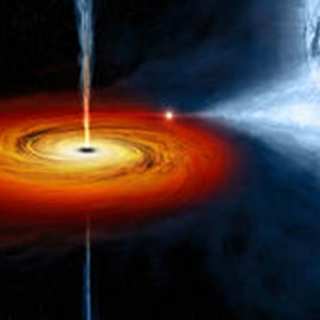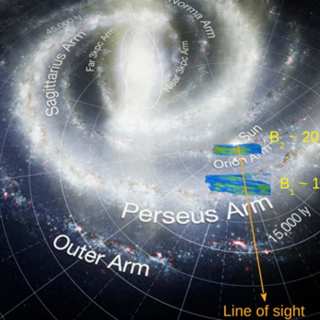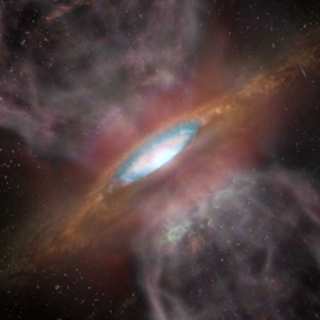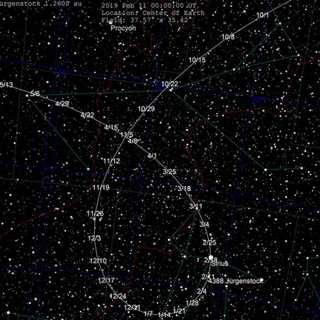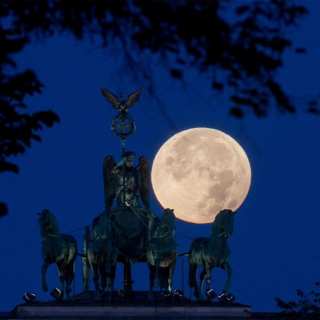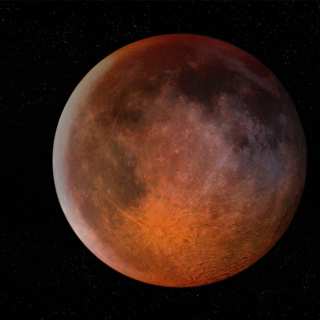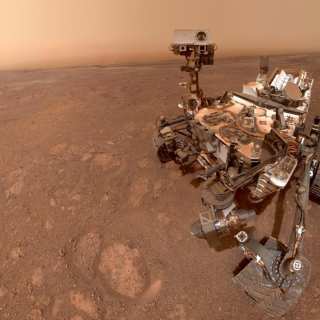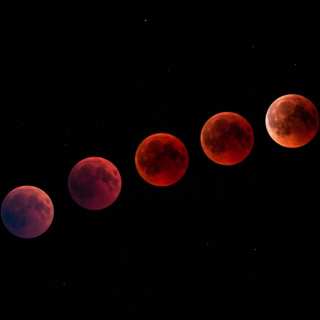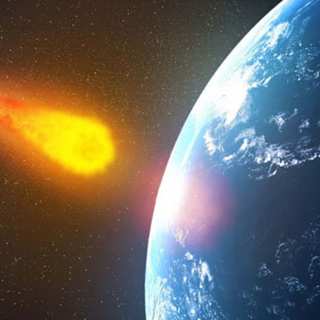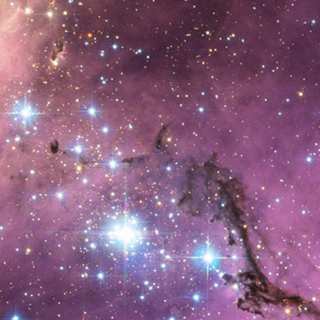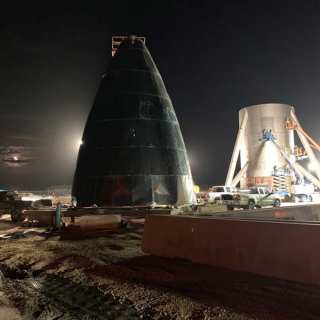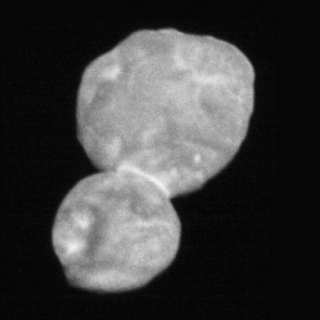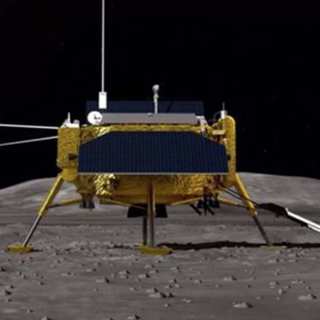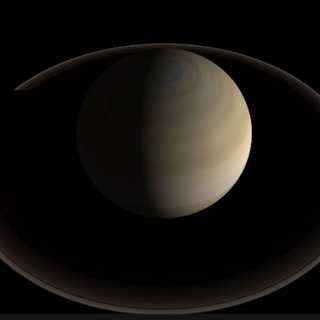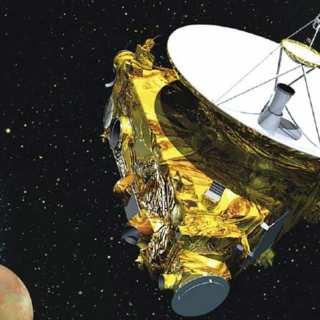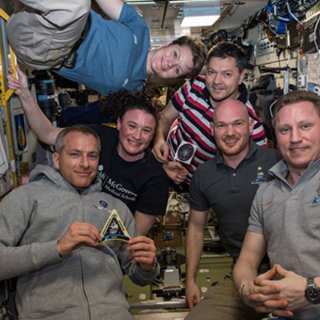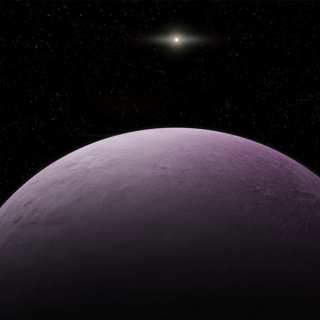Space
Scientists Will Soon Reveal First-Ever Photograph of ‘Supermassive’ Black Hole
For the first time ever, scientists are set to reveal a photograph of a supermassive black hole that is millions, perhaps even billions, of times more massive than the sun.
Researchers Chart Milky Way’s Magnetic Field in 3D, Whole-Galaxy Map Is Next
What does the Milky Way really look like? The truth is that we only have the vaguest idea.
Ready, Takeoff: NASA’s Mars Helicopter Has Been Okayed To Fly To The Red Planet
NASA's 'Mars Helicopter' has successfully completed a series of tests and is ready to take flight over the Red Planet. NASA conducted two test flights where the drone reached an altitude of just two inches. But the team says that it is all they need. This could possibly prove that the helicopter works in Mars-like conditions. In January 2019, all the pieces, making up the flight model (actual vehicle going to the planet) of NASA’s Mars Helicopter, were put to the test.
Young Star In Orion Nebula Found Surrounded By ‘Salty’ Dust
Stars could be described as being volatile and aggressive, particularly early on in their life cycles. However, scientists have only just found one that could be referred to as ‘salty’ – in a literal and figurative sense.
Astronomical Monday: Asteroid ‘(4388) Jürgenstock’ Occluded The Brightest Star In The Sky
Sirius, a system of two stars - Sirius A and Sirius B - is the brightest object that we can see from the Earth. However, an asteroid called (4388) Jürgenstock briefly passed in front of Sirius on Monday (Feb 18, 2019) night. Sirius was almost entirely to fade for a few tenths of a second, as the 3.1-mile-wide asteroid flew by. The occultation, as it is called, was visible in parts of Mexico, six US states, and Canada.
Tonight’s ‘Super Snow Moon’ Could Be A Celestial Treat
Tuesday (Feb 19, 2019) will bring with it, the “super snow moon.” This moon will be at its closest to Earth at 4:07 am EST (0907 GMT). A 'supermoon' occurs when a full moon coincides with the moon's perigee, or the point in its elliptical orbit at which it is closest to the Earth. This makes the moon appear up to 14 percent larger and 30 percent brighter than usual. We, earthlings, see this event when the moon is full or nearly full and also at its closest point to our planet, along with its slightly elliptical orbit. This close approach is called perigee by astronomers.
Was The Moon Hit By A Meteoroid During The Recent ‘Super Blood Wolf’ Eclipse?
The ‘super blood wolf’ lunar eclipse was a globally popular event for several reasons. One, it occurred during the moon’s perigee or closest point in its orbit to Earth. This made it particularly bright and clear on the night in question (January 21, 2019). This also meant that the red color typically associated with full lunar eclipses was in strong effect for many people (and their recordings).
New Paper Describes Novel Technique To Analyze Martian Rocks Using Rover Data
Scientists from Arizona State University (ASU) have published the first paper based on data from the Mars rover, Curiosity. This article has been written on the density of the planet beneath the surface.
Weekend’s Super Blood ‘Wolf’ Moon Was Also Decade’s Last
Astronomers and lunar scientists had calculated that there would be a spectacular blood moon on January 18, 2019. These events are given the name because the moon turns a strong red color before falling into a complete eclipse. However, this was a more than average lunar occlusion. The satellite was also at the closest point to the Earth, as it began this eclipse, thus upgrading its status to a ‘super’ blood moon.
Chinese Probe, Chang’e 4, Fails To Create “Lunar Mini-Biosphere”: Cotton Sprouts On Moon Die
Temperatures inside the one-liter canister dived to -52 degrees Celsius, which resulted in the death of cotton sprouts during an experiment by Chang’e 4 probe attempting the creation of a self-sustaining mini biosphere on Moon.
A Few Days Ago, Asteroid ‘2019 AG3’ Narrowly Missed The Earth’s Surface
Asteroid AG3 missed the Earth by more than three million miles (4.9 million km), 12.86 times the distance from Earth to the moon, which may be considered a narrow miss on the cosmic scale, especially given the speed of space rocks. A giant asteroid dubbed Asteroid 2019 AG3, a massive space rock, flew past Earth on Monday (Jan 14, 2019), in the early hours of the morning (GMT), according to NASA.
The Milky Way May Collide With A Second Galaxy Soon
What will happen to our galaxy in the future? Astronomers actually have a relatively detailed picture of what may happen to the Milky Way, through scientific and mathematical models of this galaxy. This data indicates, for example, that our galaxy will collide with its near neighbor, the Andromeda, at some point. However, this is not thought to be likely to occur for about eight billion years, by which time humanity may or may not even exist.
The “Stainless Steel Spaceship” -- Musk Offers Teaser of SpaceX Ship Design of the Future
At one point in history, every form of popular media about spaceships portrayed them as shiny, silver saucers or rockets that gleamed as they took off or landed! More time and practical experience with space flight have distanced humanity from this type of imagery. We came to learn that high-tech carbon-fiber and other similar compounds were more likely to survive blasting into space.
New Horizons’ Data Results in Clearer Picture of its Far-Flung Target
A few days ago, NASA presented footage of its craft, New Horizons, as it completed a fly-by of a specific object in the Kuiper Belt. This mission was a success as the vessel was able to capture images and data on its target a certain amount of accuracy.
China Claims World-First Spacecraft Landfall on Far Side of the Moon
According to reports coming from the Chinese aeronautical authority, CNS, human exploration has pushed another frontier for the first time. This undiscovered country is the ‘far side’ of the moon, which is normally never seen by anyone but is thought of as containing pristine insights into life in the early days of the solar system that are not found on Earth.
Is Saturn Destroying Its Own Rings?
One day in the far-flung future, a child may turn to their caregiver and ask, ‘Where did the ringed planet go?’ Admittedly, this is with the presumption that the solar system, as it is now, as well as the human race, are still around! These questions could arise because scientists have found that Saturn’s hallmark rings will be gone in 300 million years.
NASA’s New Horizons Reached The Farthest Object In Our Solar System
The solar system in which we live is bordered by a ‘ring’ of cosmic detritus known as the Kuiper Belt. Therefore, the objects found within this belt are the coldest in the system, since they are located at the farthest possible distance away from the sun.
Dramatic Soyuz Sojourn To The International Space Station Has Happy Ending!
The last few missions to bring new crew members to the International Space Station (ISS) have been unusually eventful, even for launches into space. Firstly, the personnel experienced a jarring vessel failure. This event quickly became the subject of intrigue and speculation, even though the crew members were able to resolve it themselves. Those astronauts and cosmonauts made it safely to the ISS.
10th Planet in our Solar System? The Newly Discovered “Farout” Has A Pinkish Hue
There’s a new dwarf planet in our solar system, and it’s the most distant one scientists have ever discovered. This tiny world, formally known as 2018 VG18, but nicknamed Farout, is about 18 billion kilometers away, roughly 3.5 times the distance to Pluto from Earth. The pink cosmic body was nicknamed after its discoverer’s exclamation!
VSS Unity Launched Into ‘Edge of Space’: Successful Mission Hints Possibility of Space Tourism
The flight was the first launch of a spacecraft, from the United States soil with humans on board, to reach the edge of space (50 miles high). The test flight was also the first time Richard Branson's space tourism startup has gone more than 50 miles above the Earth. This launch earned both the pilots commercial astronaut wings from the US government and put Virgin Galactic on track to become the first private company in the world to take paying customers to space. The launch has huge implications for a growing industry aiming to fly civilians on a regular basis.

